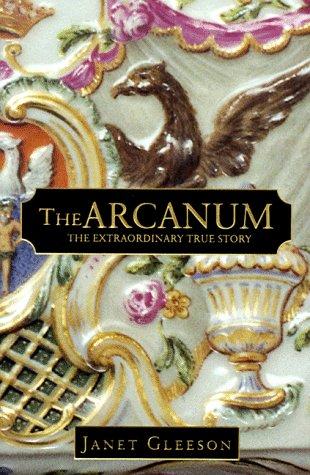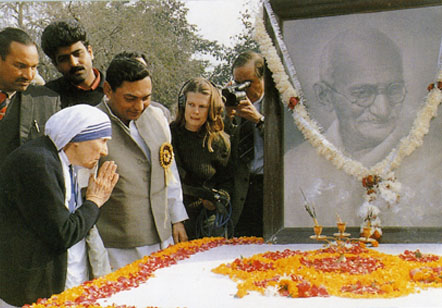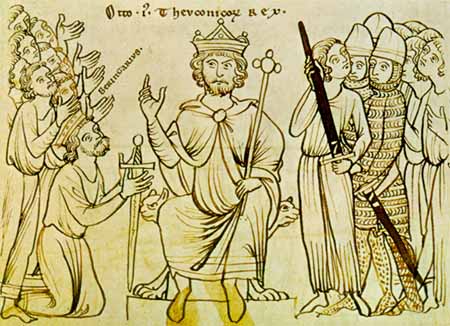
One of the most
highly viewed pages on this whole blog is my February, 2011 expose of the dissenting agenda of the parish renewal program known as JustFaith, which was ironically something I reposted from another publication, the lay run watchdog Los Pequenos Pepper from the Diocese of Albequerque. I had the satisfaction recently of hearing from one priest how this article was instrumental in keeping JustFaith out of a parish where it was about to be instituted:
deo gratias.
The folks at the Pepper have done a follow up to the original article delving into the Marxist, dissenting and New Age elements of JustFaith and are promising more to come in the future. Reprinted from Los Pequenos Pepper:
The Catholic Campaign for Human Development (CCHD), an annual collection that has consistently drawn criticism for the more than 40 years of its existence, has two components. The first component is grant-giving, which supports progressive political activism. [1] The second component is education, that is, it concerns the development and dissemination of programs that form – or deform – the conscience. [2] The most recent and most widely used of these programs is JustFaith [3], a 30-week “intensive opportunity to explore the Biblical tradition, the historic witness of the Church, Catholic social teaching, and the relationship between spirituality and justice.” [4] There are two versions of the program: one is a specifically Catholic version of the basic program that supposedly “explores the rich Catholic Social Teaching tradition of the Catholic Church.”[5]. Another version is designed to be used in ecumenical contexts or with Protestant congregations.
From the Catholic perspective, there are numerous red flags swirling about the program. One is that its founder and executive director, Jack Jezreel, has spoken in various progressive venues, such as the dissident-Catholic organization, Call to Action (CTA) and one of its affiliate members, Pax Christi [6]. Another is that JustFaith is not only a “partner” organization with CCHD (and Catholic Relief Services) but with both the CTA-related Pax Christi and Bread for the World, whose founding president was CTA’s ultra-liberal Bishop Thomas Gumbleton. Bread for the World does not feed hungry people. It lobbies American legislators and awards monetary grants to organizations such as CIDHAL, [7] a Mexican liberation theology women’s rights group that advocates for “reproductive rights.”
The JustFaith Board of Directors is another red flag. Catholic dissenters Gary Becker, a deacon and homilist in a “Catholic” feminist break-away congregation, and his wife Mary left the JustFaith Board last year after their presence on it became a public embarrassment to the organization but they have been replaced by new board members who are equally questionable. There’s Mary Kay Kantz who signed the pro-abortion Emily’s List petition to “Stop the War on Women,” [8] which includes any effort to reduce a woman’s access to abortion. [9] Or, there’s Jean McCarthy, the Episcopalian "priestess" who supports same-sex marriage. Or, Marie Dennis, who has been Co-President of Pax Christi International since 2007. There are others one might mention but the list becomes tedious. The point is that, from a Catholic perspective, these form a peculiar fellowship – namely one with an outlook that is distinctly not Catholic.
Another red flag is that the JustFaith newsletter has contained links to pro-abortion resources.
Yet another red flag is the JustFaith reading list. While the titles may change somewhat from year to year, in response to complaints, the listing has included dissenting writers who distort Scripture and Catholic teaching to “reveal” class antagonisms and a “need” to restructure society along Marxist lines.
These are disturbing signs. However, as has been pointed out by several people of good will, none of them prove that the program itself is corrupt – that is, that JustFaith is indoctrinating Catholic participants in anti-Catholic theology.
Fair enough. To do justice to JustFaith one must examine the materials it uses to form Catholics in social justice understanding. The syllabus overview of the basic program for 2011-12 is available at the JustFaith website, as well as co-facilitator notes and participant handouts. [10] Examining the materials being used this year in the JustFaith basic program isn’t quite the same thing as attending its 30 weekly sessions, which are undoubtedly colored by the inclinations of individual facilitators, but they do present a fairly good idea of what JustFaith intends a Catholic to carry away from the experience.
Opening the Program
The preliminary materials are largely organizational. They guide interested parties through the planning stages of advertising the program, setting its schedule, and obtaining the necessary commitment JustFaith requires. A “Recruiting and Planning Toolkit” includes sample fliers, bulletin inserts, a commitment statement, testimonies from satisfied JustFaith “graduates,” and discernment materials. One can understand why an overworked pastor would find the program attractive: “this program is designed to be facilitated and coordinated by program participants and does not require the time of the pastor or staff.” [11]
It is also stressed that the program does not require people with theological training or vast social ministry experience. “Co-facilitators are not asked to be the teachers; the books, videos, group discussions and occasional guest speakers are the educational tools.” [12]
This is an important point because it means that whatever perspective the JustFaith materials provide, coupled with whatever perspective participants bring to the table, is largely what participants will understand to be“Catholic Social Teaching.”
"Immersion Experiences"
In addition to weekly sessions during which syllabus materials are studied, there are four, mandatory “immersion experiences” – held about every two months –incorporated into the schedule. These events are designed to bring participants into a “personal encounter with people who have suffered the effects of poverty.” [13]
Participants are given some latitude concerning the kinds of immersion experiences they choose, so this component of the program could be extremely meaningful. However, given the inexperienced nature of co-facilitators and the many suggestions for assistance in arranging these experiences that the program offers, it’s likely they will be filtered through the JustFaith lens.
Furthermore, the third immersion experience is a “Journey to Justice Day” [14] a “specific” kind of immersion experience prepared by the CCHD. Journey to Justice is generally organized as a weekend parish retreat but is condensed to one day for incorporation into the JustFaith program. A forthcoming article will examine Journey to Justice materials separately but it is appropriate at this juncture to consider something of the program’s background.
Author Jeffry Korgen, [15] with long ties to the Alinskyian organizing network Interfaith Worker Justice, [16] refers to JustFaith and Journey to Justice as “Jesus conversion tools” and describes how the Journey to Justice experience brings new leaders into social justice ministry. [17] After warning that “we too often see [other people] as stereotypes, symbols, or statistics,” Korgen indulges in his own stereotype: “When middle – and upper-income Catholics encounter the poor and vulnerable in the context of learning about scripture and church [sic] teaching, the result can be transformative.” [18]
Irony aside, if the “transformative result” were to help disassociated Catholics see the poor as real people and, for the first time, inspire them to be responsive to their needs, Journey to Justice would have accomplished a holy end. However, this is not the “transformative result” sought. The “transformative result” Journey to Justice seeks is acceptance that the poor should be “organized for change, altering existing power relationships to give low-income people a place at the table of public life. They come to the door not to ask for a handout, but to work in partnership with middle and upper-income Catholics from the middle pew to build the kingdom of God…These are the empowered poor! If you can envision this scene, you already have a good idea of how the Journey to Justice retreat works.”[19]
And, as Jack Jezreel has written the foreword to Korgen’s book, we have a good idea of the transformative results JustFaith seeks, too. Developing this idea, then, JustFaith suggests that the fourth and final immersion “consist of a legislation advocacy experience.”[20]
Opening Retreat
There are also two, mandatory weekend-long retreats, held at the beginning and close of the 30-week program. The first “lays the foundation for community building and trust that is required in this formation process” and the second “ties together the conversion experience,” ascertaining that participants set concrete goals for future action. [21]
To that end, the opening retreat isn’t focused on social issues but “on the work of becoming church for each other.” [22] Much of what transpires is familiar, using language, for example, that contains invocations to the Holy Spirit or Jesus, which would make a Catholic comfortable. There are also ice-breakers, self-focused exercises, and readings – some from the scriptures and some from contemporary writers, such as four-page handout on the “Stages of Human Growth and Spiritual Development” adapted from the work of Ken Wilber, Chris Cowan, Don Beck, and Clare Graves, proponents of spiral dynamics, a theory of evolving core values, including spiritual values.
The JustFaith adaptation presents this material as eight “faith journey” stages. As the stages begin with the first typified by infancy (and late-stage Alzheimer’s victims) and the last is typified by Gandhi’s ideas of pluralistic harmony, it’s obvious that the authors have arranged the stages in a hierarchy, with the first stage being the most immature.
Participants aren’t told that this is not a Christian theory of human development but are simply instructed to find which stage “most closely reflects where you are on your spiritual journey.” Someone who believes he must be obedient to a rightful authority, which is exemplified, we are told, by religious fundamentalism, is at Stage D (the fourth stage), quite low down in the hierarchy of development. Stage F (the sixth stage) includes people who read “the Bible in solidarity with the poor” or are active in human rights campaigns. They are people who are comfortable with "complexity and chaos", and the implication is that they are more spiritually developed. [23]
These subtle toxins are massaged into the soul via exercises such as the “The Sacred Art of Listening,” taken from the title of a book by Kay Lindahl. [24] “Sacred listening,” participants are instructed, makes “no judgments,” has “no assumptions,” but “is in communion with the speaker,” and so forth.
The stage is now set for the formation of a fellowship that seeks a “spiritual development” that has nothing to do with Catholic understanding of the human person. That’s a big problem for a Catholic program.
More on this in the future...
For my previous article on JustFaith,
see here.
ENDNOTES
[1] Detailed accounts of recent grants can be read at www.reformcchdnow.com and at www.speroforum.com.
[2] For former (C)CHD educational programs and an in depth discussion of their liberationist perspective, see Catholic Media Coalition, USCCB, Dossier on Liberationism in the USCCB: www.catholicmediacoalition.org/USCCB.htm or Stephanie Block, “Mopping Up the CCHD,” Spero
News, 4-14-10: www.speroforum.com/site/print.asp?idarticle=30866
[3] CCHD has been a “key partner” of JustFaith since 2000. “The collaboration has allowed CCHD to contribute to the development of JustFaith programs and has improved CCHD’s communication with the Catholic community.” http://old.usccb.org/cchd/justfaith.shtml
[4] Press Release: www.usccb.org/cchd/JFPartnershipPR.htm
[5] JustFaith, “Getting Started: Overview,” 2010-2011, p. 2.
[6]These include: the 1996 Call to Action national conference; the 1997 Call to Action national conference,
“Spirituality of Commitment Making Promises, Friends and Justice”; the August 11-13, 2000 fourth West Coast Call to Action Conference, at San Jose State University, “Transformed People, Transformed Parish, Transformed World;” and the 2007 keynote at CTA-affiliated Pax Christi National Conference.
[7] See for example, Suzie Siegel, “Mexican women work for progress,” The Tampa Tribune, 3-8-96.
[8] See www.change.org/members/263583
[9] “Stop the War on Women – What’s at Stake:” stopthewaronwomen.com/whats_at_stake
[10] JustFaith website: www.justfaith.org/programs/resources/jfcp_2011-programdocuments.html
John T. Williams, Faith
[11] “Getting Started: Overview…” p. 3.
Journey
[12] “Getting Started: Overview…” p. 14.
[13] “Getting Started: Overview…” p. 16.
[14] JustFaith, “Immersion Experiences – Catholic Version,” 2011-12, p12
[15] Korgen in currently Executive Director for the Diocese of Metuchen’s Department of Diocesan Planning.
[16] Korgen has, among other things, served on the IWJ Board.
[17] Jeffry Odell Korgen (foreword by Jack Jezreel), "My Lord and My God: Engaging Catholics in Social Justice Ministry", Paulist Press, 2007, p. 55.
[18] My Lord and My God…p. 56.
[19] My Lord and My God…p. 57.
[20] “Immersion Experiences …,” p13.
[21] “Getting Started: Overview…” p. 16.
[22] JustFaith, Catholic version, “Opening Retreat 2011-12,” p. 7.
[23] JustFaith, Catholic version, “Opening Retreat 2011-12,” Friday Night session, pp 11-14.
[24] Kay Lindahl is a Global Council Trustee for the United Religions Initiative, chair-elect for the North American Interfaith Network and president of the Alliance for Spiritual Community. She is also an ordained interfaith minister, founder of The Listening Center, and the author of several books.










